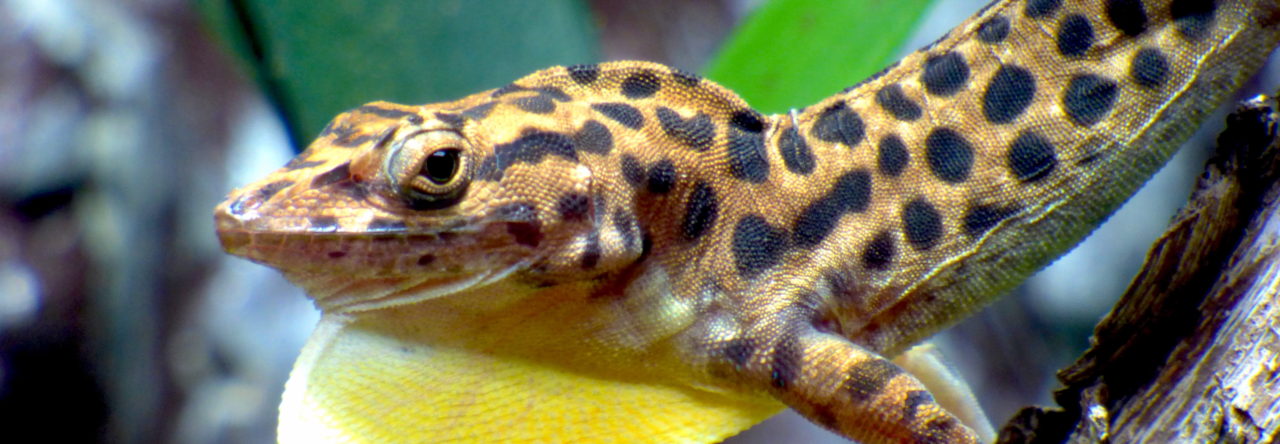From the pages of the Gainesville Sun , referring to a recent paper in Oecologia.
From April to September of 2017, Jesse Borden was climbing trees and counting lizards around Alachua County.
Sometimes, he could be found in branches on the University of Florida campus or in people’s backyards. Other times, his distinctive red helmet popped in and out of leaves in nearby forests.
The 34-year-old UF student is in his fourth year pursuing a doctoral degree in interdisciplinary ecology, and much of his work has focused on Gainesville’s native green anole lizards and their responses to two threats: development and invasive brown anoles.
He found that in the presence of brown anoles, the green natives moved about 17 times higher in trees, or about 8.3 meters in median perch height, to coexist. But the shift did not allow the lizards to overcome their habitat loss from human development.
These findings were recently published on Oct. 7 in the journal Oecologia.
“The extent to which [green anoles] were shifting was pretty fascinating,” Borden said. “That appears to allow them to coexist with the threat of an invasive species, the brown anole that is competing with it, but it doesn’t make them immune to other effects like urban development. And so it seemed like urbanization was the strongest driver of their decline across the landscape.”
Brown anoles were first introduced to the mainland southeastern U.S. in the early 1900s and were well established by the 1940s, according to the study. In Alachua County, they have been established for decades and appear to thrive in urban environments, Borden said. It is not known exactly how they came to the area, but it could have been via cargo and boats.
To study the green anoles’ response to both development and brown anoles at the same time, he and other helpers surveyed 61 trees and the ground around them for lizards twice each, once per day and once after dark. They then statistically analyzed the data for metrics like abundance, perch height and urbanization.
“It was a lot of fun,” Borden said. “Many thanks to so many kind people who let us use their backyard trees.”
The student said his findings raised many questions and topics for future research, such as how much time the green anoles spend higher in the trees. He is currently working on a project looking at evidence for change in body shape across the urban to natural gradient in lizard species here and change in their temperature tolerance to cold.
For Gainesville residents who miss seeing the little green lizards, Borden said, there are a few things people can do to help bolster their habitat space in the city. Planting native vegetation of varying heights in yard space can benefit the green anoles. Protecting and preserving forest patches and trees also supports them and lots of other wildlife.

“I just hope people are noticing the green anoles,” Borden said. “I find them so beautiful. They’re super cool. They’re a really fun and special part of the southeast U.S. and Florida.”
Contact Borden online via Twitter at @JesseBBorden or Instagram at @borden_ecology_adventures.
- Evolution in Real Time on Lizard Island - March 23, 2025
- Spider Snags Adult Anolis osa - March 22, 2025
- An Homage to the Green Anoles of New Orleans - March 21, 2025


Peter Uetz
Wow, quite striking. I noticed that when I was in Gainesville in March: hardly any green anoles, almost all brown ones.
Will add that to the Reptile Database, we don’t have too many ecology papers 🙂
Dr Rashmi Sharma M.Sc. Ph.D. D.Sc. D.C.A. F.S.A.S.
I am studying Anoles of Rajasthan India. Anoles of Rajasthan are Brown.
Dr Rashmi Sharma
D.Sc. F.S.A.S.
Professor
918949593913